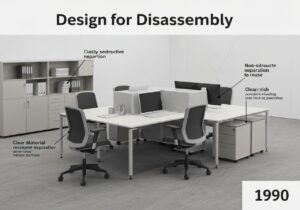An international standard for quality management systems.
- Methodologies: Engineering, Quality
ISO 9001

ISO 9001
- Continual Improvement, Customer Experience, Customer Support, ISO 9001, Process Improvement, Quality Assurance, Quality Control, Quality Management, Quality Management System (QMS)
Objective:
How it’s used:
- A standard that sets out the criteria for a quality management system. It is based on a number of quality management principles including a strong customer focus, the motivation and implication of top management, the process approach and continual improvement.
Pros
- Can improve the quality and consistency of products and services; Can increase customer satisfaction and market share.
Cons
- Can be bureaucratic and time-consuming to implement and maintain; The benefits may not always justify the costs.
Categories:
- Project Management, Quality
Best for:
- Implementing a quality management system in an organization to improve its processes and products.
ISO 9001 is widely implemented across various industries including manufacturing, healthcare, construction, and information technology, serving as a framework for organizations aiming to enhance their quality management systems. This methodology is typically initiated by top management but requires active participation from all employees to foster a culture of quality. During the planning phase of a project, teams can integrate ISO 9001 principles to identify customer requirements, set measurable objectives, and delineate processes to achieve those goals. For instance, in the automotive sector, ISO 9001 aids companies in standardizing workflows to reduce defects, thereby improving product reliability and customer trust. In healthcare, adopting ISO 9001 can streamline patient care processes, which can lead to higher satisfaction rates and improved health outcomes. Furthermore, the continual improvement aspect of ISO 9001 encourages organizations to analyze feedback and performance data, facilitating ongoing refinement of their products and services. The focus on process approach allows businesses to document and understand their workflows, which contributes to more efficient resource management and reduced waste. Emphasizing a strong customer focus not only aligns product offerings with market demands but also enhances brand reputation, potentially increasing market share as satisfied customers become advocates for the organization.
Key steps of this methodology
- Understand customer needs and expectations to ensure the quality management system aligns with them.
- Establish and document a quality policy that reflects the organization’s commitment to quality.
- Define and assess the processes needed for the quality management system, including their sequence and interaction.
- Determine resource needs and allocate resources effectively to meet the requirements of the quality management system.
- Implement and operate the established quality management system across the organization.
- Monitor and measure processes and products to ensure compliance with quality requirements.
- Analyze data and performance metrics to identify areas for improvement within the system.
- Conduct internal audits to verify that the quality management system conforms to planned arrangements and is effectively implemented.
- Take corrective actions to address nonconformities and prevent recurrence.
- Review the quality management system regularly with top management to ensure its continuing suitability and effectiveness.
- Focus on continual improvement of the quality management system to enhance performance and customer satisfaction.
Pro Tips
- Regularly review and update quality management processes based on data analysis and feedback to adapt to changing market demands.
- Integrate risk management practices within the quality management system to proactively identify and mitigate potential quality issues.
- Establish cross-functional teams to enhance communication and collaboration, driving continuous improvement across all departments.
To read and compare several methodologies, we recommend the
> Extensive Methodologies Repository <
together with the 400+ other methodologies.
Your comments on this methodology or additional info are welcome on the comment section below ↓ , so as any engineering-related ideas or links.
Historical Context
1980
1986
1986
1987-03
1990
1990
1992
1980
1980
1986
1987
1990
1990
1990
1992
(if date is unknown or not relevant, e.g. "fluid mechanics", a rounded estimation of its notable emergence is provided)















Related Posts
Master Production Schedule (MPS)
Mass Customization
Marketing Funnel
Marketing Audit
MAPO Index (Movement and Assistance of Hospital Patients)
Manufacturing Resource Planning (MRP II)